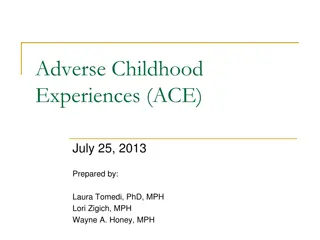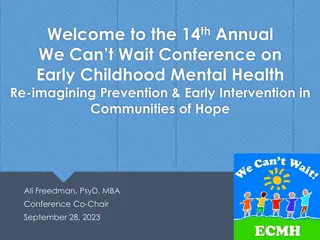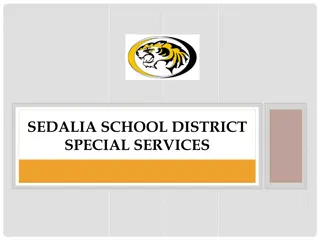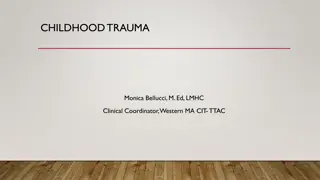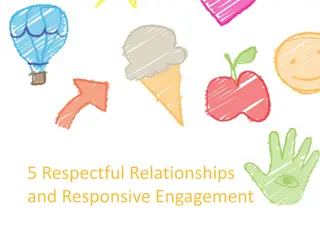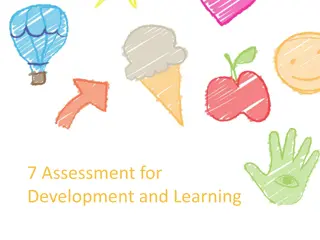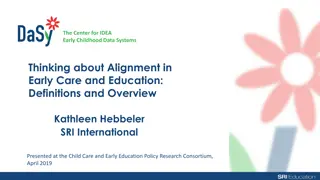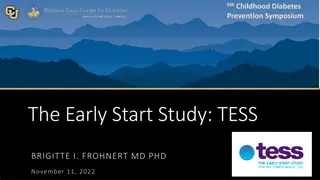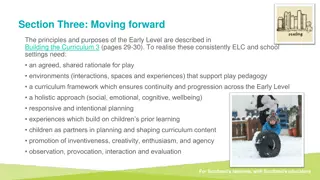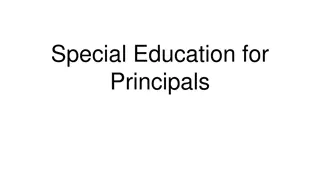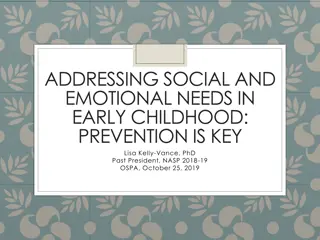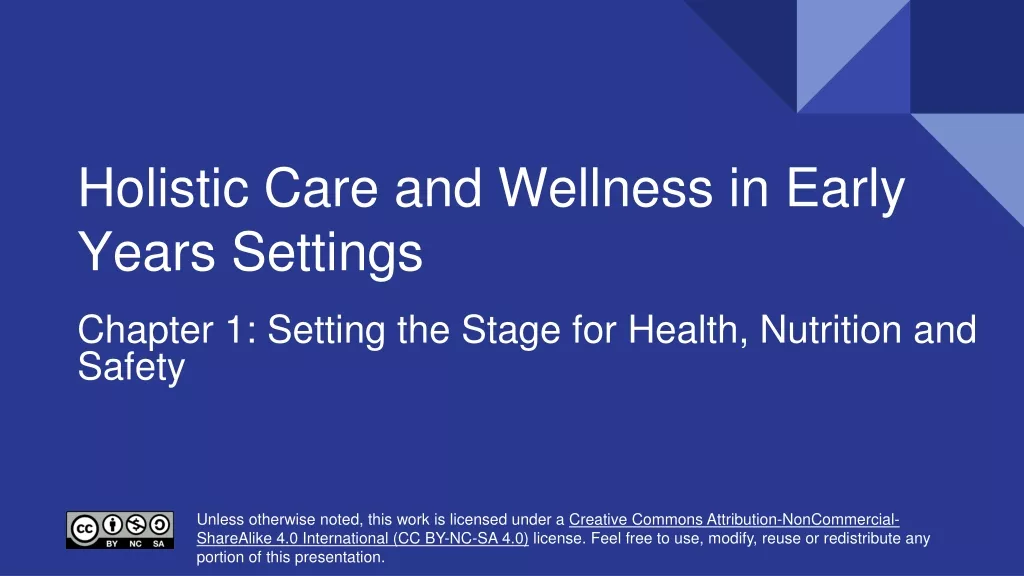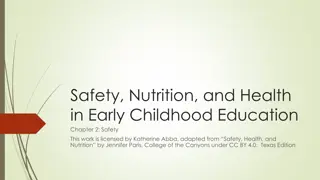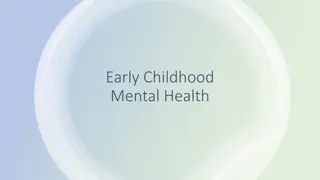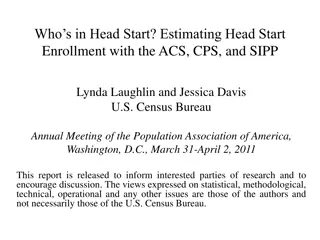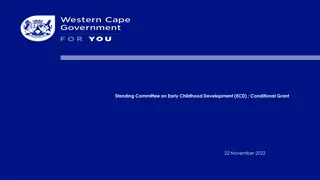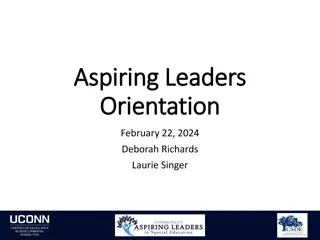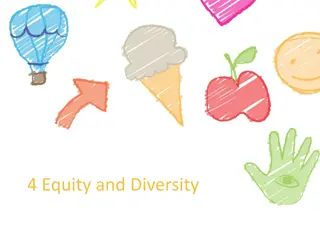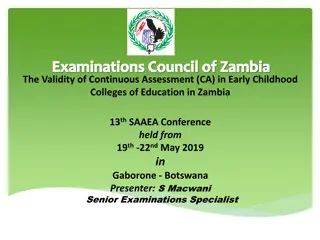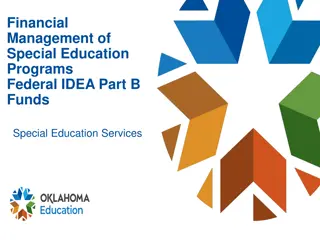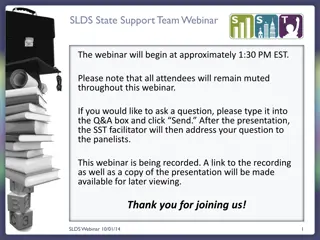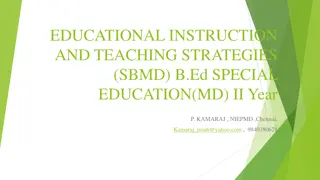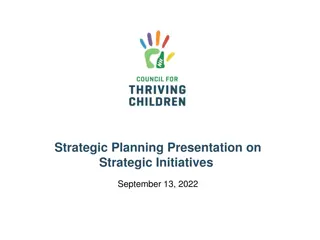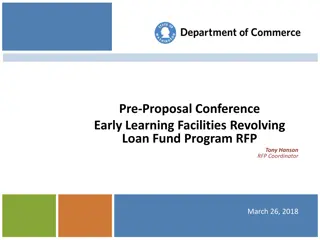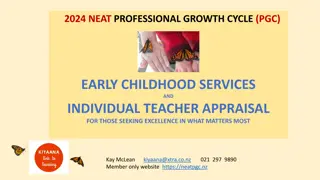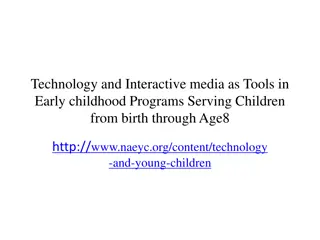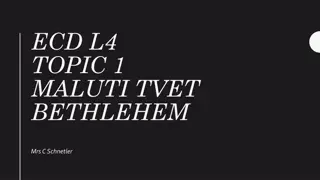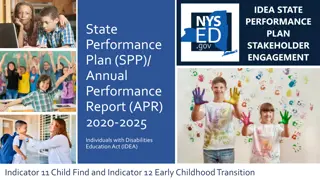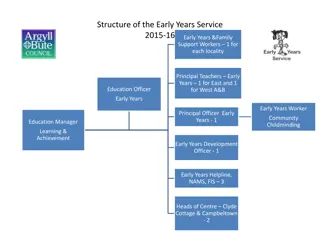Enhancing Quality in Early Childhood Special Education Practices
This presentation delves into developing and implementing quality practices in early childhood special education. It discusses various quality issues such as working with families, functional needs assessment, focus on engagement and independence, and more. The importance of matching quality issues with routines-based model components is explored, highlighting the significance of addressing key areas for effective outcomes in special education classrooms.
Uploaded on Sep 16, 2024 | 0 Views
Download Presentation

Please find below an Image/Link to download the presentation.
The content on the website is provided AS IS for your information and personal use only. It may not be sold, licensed, or shared on other websites without obtaining consent from the author. Download presentation by click this link. If you encounter any issues during the download, it is possible that the publisher has removed the file from their server.
E N D
Presentation Transcript
All sections to appear here The box on the right designates where all your slides will appear. Feel free to move or resize the box.
Developing Quality 619 Practices Robin McWilliam robin.mcwilliam@siskin.org
Quality Issues 1. Working with families 2. Functional needs assessment and goals 3. Focus on engagement, independence, & social relationships 4. Amount and quality of instruction 5. Dosage of special-ed-supported classroom time 6. Capacity of classroom teacher to address IEP goals + 7. Integration of ECSE and therapies with classroom routines (consultation skills) 8. Classroom management (role of itinerant?) 9. Quality of inservice training
Routines-Based Model Components (AKA Engagement Classroom Model) Ecomap RBI Participation-based goals Incidental teaching Integrated services Zone defense schedule Sit and Watch Collaborative consultation Checklist-based training
Which components address which quality issues? Quality Issues Routines-Based Model Components 1. Working with families Ecomap 2. Functional needs asst/goals RBI 3. Focus on EISR Participation-based goals 4. Instruction Incidental teaching 5. Dosage Integrated services 6. Classroom teacher s capacity Zone defense schedule 7. Integrated services Sit and Watch 8. Classroom management Collaborative consultation 9. Quality of training Checklist-based training
Match of Quality to RBM Components Quality Issues Routines-Based Model Components Match with Quality Issues 1. Working with families Ecomap 1 2. Functional needs asst/goals RBI 1, 2, 3 3. Focus on EISR Participation-based goals 2 4. Instruction Incidental teaching 4 5. Dosage Integrated services 6, 7 6. Classroom teacher s capacity Zone defense schedule 8 7. Integrated services Sit and Watch 8 8. Classroom management Collaborative consultation 6, 7 (5) 9. Quality of training Checklist-based training 1, 2, 3, 4, 7, 8
Importance of being able to succeed with special-ed-supported classrooms Inclusion: Ability to pass on strategies to regular teachers Collaborative consultation Assume special ed is effectiveClassrooms supported by Children engaged, independent, good social relationships special ed are effective Only effective when delivered out of context? ECSEs and therapists
What are we trying to do? Provide classroom experiences? Comply with IDEA? Promote optimal functioning in life and preparation for future functioning, including learning?
Engagement A measurable construct Precise: Measure amount of time engaged at various levels difficult Imprecise but reliable: Rate child s engagement in routines Overall With adults With peers With materials Sophistication level STARE STARE
Mastery of Engagement, Independence, and Social Relationships in the Classroom ClaMEISR Now crosswalked with federal outcomes (Naomi and ECTA/DaSy colleagues) Discussed in session tomorrow Available for field testing in 1 month. robin.mcwilliam@siskin.org
McWilliam Process for Implementation Planning Decision maker becomes familiar with model Helps stakeholders become familiar with model (presentation, meeting, reading) Robin facilitates meeting to review model and find out quality issues in the state (or other entity) Match model to quality needs (noting which needs not met) Select model components state would like to implement
Process (cont.) Add other initiatives state plans to undertake Establish timelines for each component and other initiatives Define implementation goal: full, partial? Dotted line to prepare, solid line to implement, full- implementation deadline, dotted line for maintenance Write action plan for each component: Use Implementation Stage grid to address drivers
R-BEI Best Practice Implementation Plan Goal Early intervention in Maine will be engaged in these best practices by winter 2018 5 Year Time-line August 2013 August 2014 August 2015 August 2016 August 2017 August 2018 Ecomap & R-BI X Goal writing X Consultative Home Visits X Consultative Center visits Integrated therapy (ZDS) X X Incidental teaching X X Natural environments X Program Evaluation X X Check points along the way
R-BEI Best Practice Implementation Plan Goal Early intervention in Aotearoa will be engaged in these best practices by July 2018 5 Year Time-line July 2014 July 2015 July 2016 July 2017 July 2018 Now Implementation Ecomap & Cultural profile RBI Functional participation based goal writing Keyworker (PSP) Piloting model Model developed Support based home visits Collaborative consultation & ECE engagement model/coaching Incidental teaching (responsive teaching) Natural environments Evaluation FINESSEII (adapted) Case Studies STARE data Check points along the way
Bottom Line 1. Until we commit to high-quality itinerant services, we won t have successful inclusion Either increase dosage of special-ed-supported classroom time or work with families and other caregivers Work with families anyway, if you want to be effective Increase the amount of instruction children receive Some classrooms need help in organization, before anything else can happen Rooms and homes need an effective default consequation strategy Our people need effective training: checklist-based feedback If you measure functioning (EISR), you ll have good info for outcome summaries 2. 3. 4. 5. 6. 7. 8.
How to Make This Impossible List Possible Implementation plan Ways I can support states: 1. Visit and work with you (+ 2 & 3) 2. Consult with you from afar (+ 3) 3. Materials






